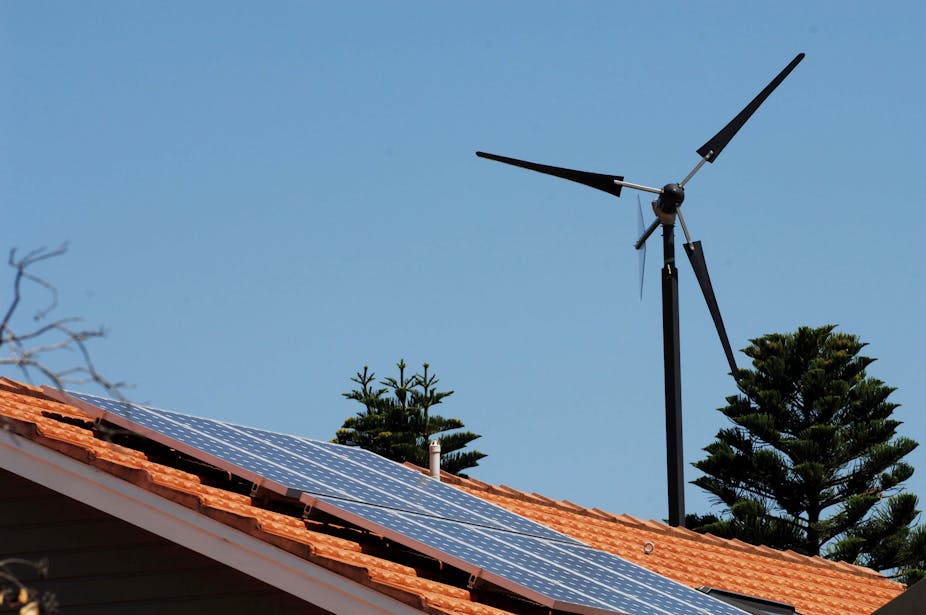Internoise is the world’s premier research conference for acousticians. The 2015 meeting is being held right now in San Francisco. Buried among the hundreds of papers is one that you could easily take as a prank: Infrasound and low-frequency noise measurements at a solar plant. The paper is by Mike Greene, an acoustician working for the Dudek company in San Juan Capistrano, California.
Greene conducted the environmental review for two proposed concentrator photovoltaic (CPV) solar energy facilities, which use lenses and curved mirrors to focus large areas of sunlight onto solar cells. Greene explains in his paper that following “comments from a private organization”, it became necessary for the review to investigate:
a concern that the CPV electric generation systems and associated inverters and transformers could produce high levels of infrasound and low frequency noise (ILFN).
The measurements were conducted at an existing solar energy farm in Southern California.
Infrasound and low frequency noise is generally inaudible unless it occurs at very high-pressure levels of more than 85 decibels on the G-weighted sound scale (dBG). This is the audibility threshold standard adopted by the Danish environmental protection agency.
We are all surrounded by inaudible infrasound that is produced by a wide diversity of sources from our own heartbeat and breathing, walking, wind and storms, the sea, traffic, and almost all mechanical equipment (stereos, car motors, ceiling fans, air conditioners, refrigerators, washing machines). We can hear these sources, but it’s not the infrasound we hear.
Greene notes that:
typical infrasound exposure levels for people who live in cities are approximately 50-65 dBG most of the time due to traffic, air conditioning, heating fans, subways and air traffic.
Country people’s daily lives are also filled with audible and inaudible sound from wind, the sea (if near the coast), farm machinery such as chain saws, generators and vehicles, passing traffic, cicadas, and the same domestic sources found in city homes.
To no one’s surprise, other than presumably those submitting the concerns, Greene’s study found that photovoltaic cells produce infrasound and low frequency noise which is way below audibility.
Running into people complaining loudly about the sound of their rooftop solar is not exactly a common experience. Infrasound and low frequency equipment noise levels in the study ranged from 55 dBG at a distance of 50 feet, to 62 dBG at 25 feet (transformer and cooling cabinet).
So, even at a very short proximity (much closer than any solar farm neighbour would ever be located), the G-weighted noise levels were found to be well under the audibility threshold of 85 dBG.
Greene also measured infrasound and low frequency noise half a mile away from the solar energy facility, and found levels seven to 14 dB higher than those measured up close to the photovoltaic transformers and inverters. This was because of higher wind levels at that location than at the solar farm. This showed that:
even relatively low wind speeds can generate substantially higher ILFN levels than the equipment of interest.
The technophobic madness that required Greene’s study to be conducted is the most extreme example of where the toxic combination of scientifically illiterate and anxiety-filled petitioners meet risk-averse regulatory oversight.
Wind farm-phobics knowingly insist that it is folly to believe that it is only audible noise that can disturb and harm you. If you ask them why they do not share the same concerns about inaudible infrasound from the many ubiquitous other sources we are all bathed in daily, such as those listed above, they move to suggesting that it is the unique sound “signature” of wind farm infrasound that is the big problem.
If you then point to the example of residents near two Australian wind farms who claim they are disturbed by nearby wind turbines even when they are turned off, the argument then switches to the lived knowledge of those making the claims. They would have you believe that wind moving past stationary wind turbines – unlike that passing across any other natural or built structure – can make you sick.
In Australia, we have just seen the publication of a Senate Committee report on wind turbines chaired by Senator John Madigan and a committee with four cross bench senators who had often been on the public record opposing wind farms. If adopted in full, the set of proposals will gut wind energy development in Australia.
The report is laughably inept, privileges passionate testimony over scientific evidence, and lauds submissions from self-anointed experts and sworn anti-wind farm activists. It contains not a single mention of the largest and most important study of wind farms and annoyance and health, recently conducted by Health Canada.
But perhaps worst of all, having now worn 25 reviews of the evidence which all found no evidence of direct health effects from wind turbine exposure, the Committee has recommended that the National Health and Medical Research Council be bypassed in yet another review by an “independent” committee.
This slur on our peak expert body in health and medicine has all the class of a perennially losing D-grade cricket team trying to oust the entire national system of umpire training and accreditation to get the results they just know they deserve.
How long will it be before some of the amateur scientists in the parliament usher in the next voraciously expensive inquiry designed to venerate some crack-pot theory like solar panels being dangerous?

